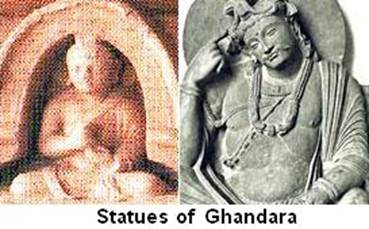|
In Chapter 25,
From Kurgans to Pyramids
the Kushite Empire was mentioned and its name meaning “bird”
in Turkish was questioned. The reason being that, this word is
found in languages that have been separated for very long
periods of time. This word meaning “bird” is found as
kus in the Sumerian
language and as kutz
in the Maya language (1).
As no words could have been borrowed from Sumerian to Mayan or
vice-versa, the only logical explanation is that Sumerian,
Mayan and Turkish stem from a common root language, which is
the Asiatic Proto-language.
But there is
one more clue supporting the Central Asiatic origin of this
word. This clue is found in the name of an Empire known as the
Kushan Empire,
which lasted from the first to the third centuries AD, but has
a much ancient beginning. The Kushan name is clearly made out
two words Kush and Han meaning “bird” and “king”, where “Han”
is a late version of the “Khan” title used also for Ottoman
emperors.
The bird has
been an important animal for ancient cultures, symbolizing the
solar deity (see Chapter 29,
The bird symbolism). Below we see the territories
controlled by the Kushan Empire. It extended from western
China on the east, to Bactria on the west and included the
Indus Valley as well as most of northern India.

In the
name of the
Hindu-Kush
Mountains (shown on the map) we can still find the connection
between Hind (ancient India) and Kush (the Kushan Empire). The
Kushan Empire included important cultural centers such as Belh
(Bactra), Kashgar, Kucha, Turfan and the capital city
Ghandara. The northern region of the ancient Kushan Empire is
defined nowadays as BMAC (see Chapter 16,
The south-west expansion).
This vast region has been the land of the Saka (As-Okh /
Scythians), the Sarmatians, the Kushans and the Alans.
The people
forming the Kushan Empire were descendents of the Central
Asiatic Yueh-chi or
Yuezhi tribes who
were nomads traveling long distances. They even went up to the
north-eastern regions of Asia for fur trading. There are
numerous theories about the derivation of the name Yuezhi. My
own interpretation is that these Asiatic people defined
themselves as “superior”, a word pronounced as
Yuedje in Turkish.
This meaning is quite possible considering that the difficult
phoneme “dje” -not found in Chinese- has been replaced, most
probably, by the “zhi” sound, which is quite common in
Chinese.
There are
several statues found in Ghandara indicating the dressing
style of the Kushan rulers. In the pictures below we see two
such examples where the right arm has been left uncovered. Luc
Kwanten says the following about this dressing habit
(2):
Uighur representations of Buddhist saints, like the Chinese,
are always clothed, whereas in the Gandhara style, at least
one of the shoulders is naked.
This
dressing style has already been identified among the Sumerian,
the Indus Valley kings and the spiritual leader of present
Tibet (see Chapter 17, The
Indus Valley script).

An important
Kushan ruler is known under the name Mahasena Huvishka (circa
155 to 187 AD). The coin shown below belongs to this king, but
the letters stamped on the coin do not agree with either
Mahasena or Huvishka. I tried to read the stamped name with
the help of the ancient Turkish (Orhun) letters, as shown
below-right.

Except the
two first letters H and a, which also are of Asiatic origin
(3),
the remaining letters on the coin perfectly agree with the
Orhun letters shown in red. The transcription then becomes
“Hakantekin”, where Tekin or Tigin is a Turkish title given to
minor regional kings or princes.
At the Orhun
Valley in Central Asia we have the
Kül Tigin
stele, which is 3.35 m high and contains several lines of
Turkish inscriptions written with the Orhun characters. The
scribe has added his name at the end of the inscriptions as:
Yollugh Tigin
(4).
The coin
above has two more interesting clues which are worth
mentioning. The first one is the bird held in the right hand
of the king, a possible indication to “Kush-Han” (bird-king)
and the next clue is the pelerine wore by the king. We find a
similar pelerine on the young Saka (Scythian) prince (see
Chapter 23, The Issýk kurgan). |